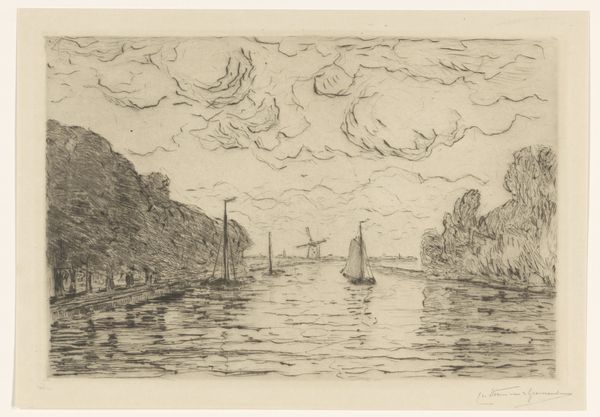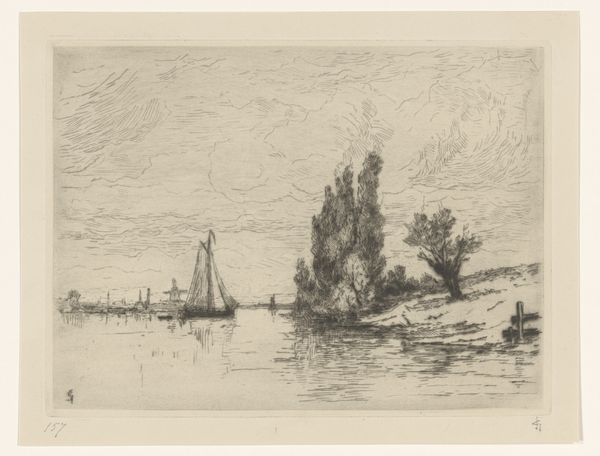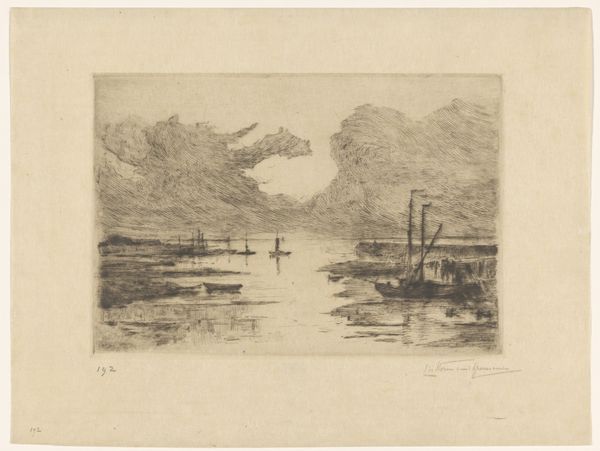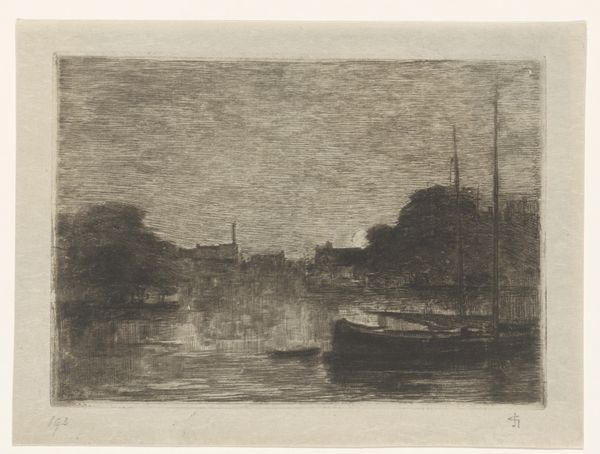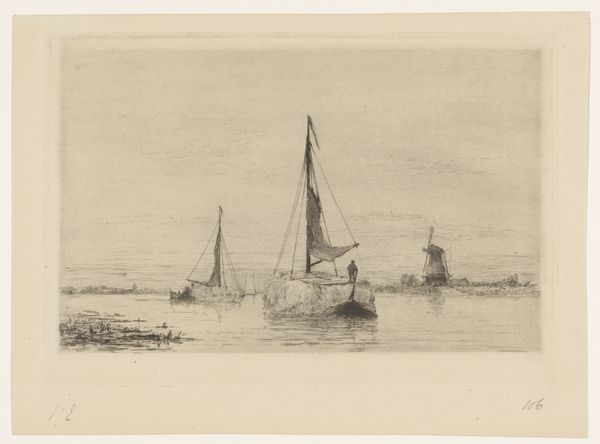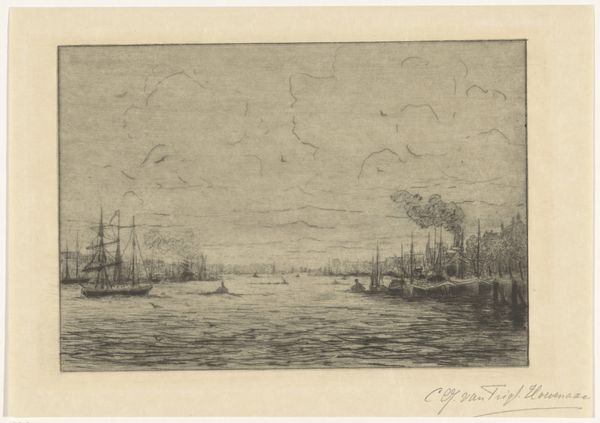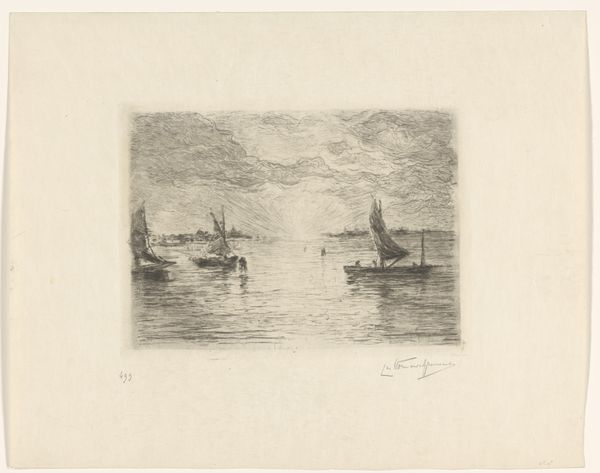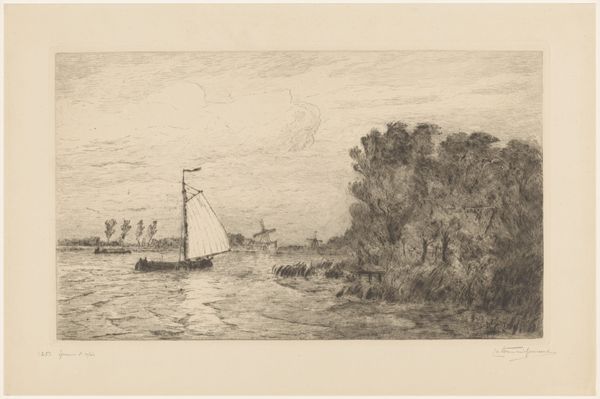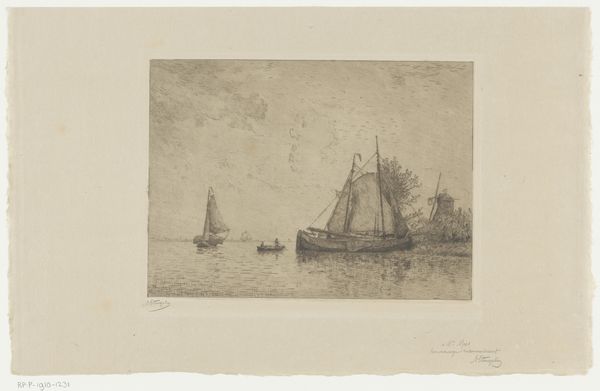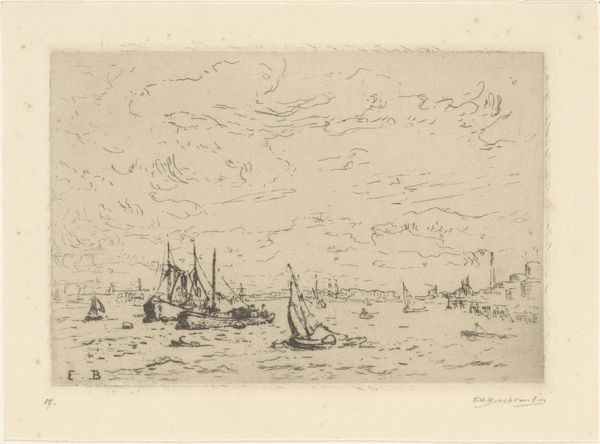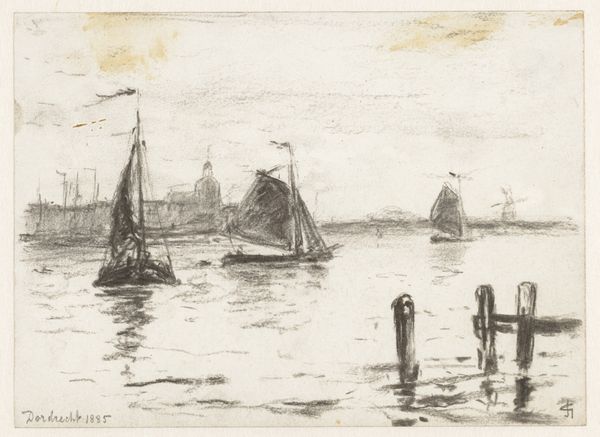
Gezicht op de Delftsche Vliet bij Den Haag 1851 - 1902
0:00
0:00
print, etching
#
dutch-golden-age
# print
#
etching
#
landscape
#
etching
#
realism
Dimensions: height 202 mm, width 299 mm
Copyright: Rijks Museum: Open Domain
Carel Nicolaas Storm van 's-Gravesande made this print of the Delftsche Vliet, near The Hague, using etching. It's a process where the artist scratches lines into a wax-covered metal plate, then immerses it in acid. The acid bites into the exposed metal, creating grooves that hold ink. Look closely, and you'll see how the density of lines creates tone and texture. Areas with closely packed lines appear darker, giving depth to the water and foliage. The artist's hand is evident in every mark, each carefully considered to convey the atmospheric conditions of the scene. Etching has a fascinating history, linked to the rise of print culture and the dissemination of images. Unlike painting, which is unique, etching allows for the creation of multiple impressions, making art more accessible to a wider audience. This democratizing aspect is essential to understanding its significance. It connects artistic skill with broader social and economic trends. The importance of materials, making, and context is paramount. It challenges the traditional hierarchy between art and craft, revealing the rich layers of meaning embedded in the work.
Comments
No comments
Be the first to comment and join the conversation on the ultimate creative platform.
